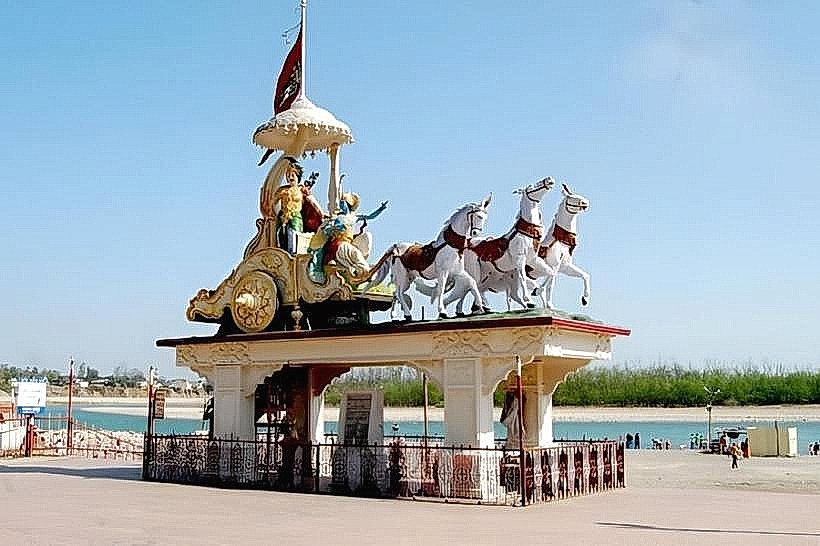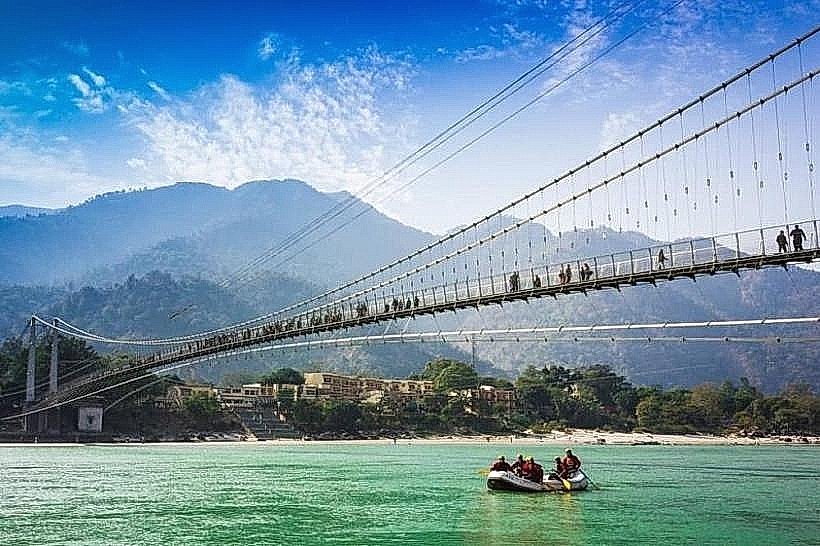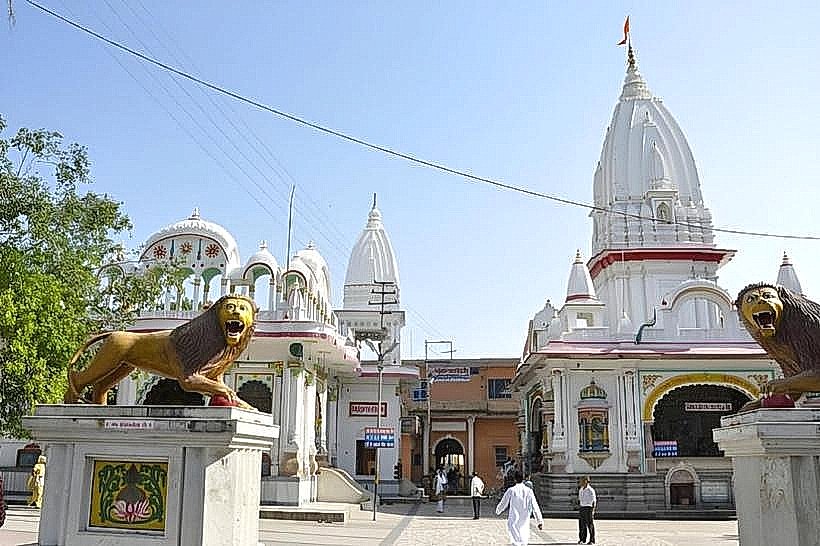Information
Landmark: Laxman JhulaCity: Rishikesh
Country: India
Continent: Asia
Laxman Jhula, Rishikesh, India, Asia
Overview
Laxman Jhula in Rishikesh, Uttarakhand, is a historic suspension bridge spanning the Ganges, where footsteps echo softly above the shimmering water, linking locals and travelers alike in its timeless crossing, not only that named for Lord Laxman, brother of Lord Rama, the bridge carries centuries of legend as it links devotees, travelers, and locals, its span catching the shimmer of the river against the misty Himalayan foothills.Laxman Jhula sits about five kilometers northeast of central Rishikesh, stretching across a narrow span of the Ganges where the river glints between steep, green hills, in turn the bridge stretches about 137 meters across and just 1.5 meters wide, a suspension span of steel cables and wooden planks held firm by reinforced towers rooted on each riverbank.Pedestrian use only-walkers and light two-wheelers can cross here, keeping the structure intact and letting you move safely while the boards hum softly underfoot, in addition legend of Laxman holds deep mythological roots-Hindu lore says Lord Laxman once crossed the Ganges here on a rough jute rope, its fibers twisting above the water and inspiring the bridge built centuries later.As it turns out, Laxman Jhula stands as a cultural landmark, a living symbol of spiritual devotion and pilgrimage, linking temples, ashrams, and riverbank homes on both sides of the Ganges where bells echo softly in the wind, along with built in 1929, the current bridge replaced older rope-and-wood spans, blending British engineering with the locals’ deep reverence for the site-weathered stone still cool to the touch.Near the bridge, several compact temples and shrines-among them those dedicated to Shiva and Hanuman-draw devotees who pause to light incense and murmur quiet prayers, meanwhile around Rishikesh, the air hums with quiet chants from ashrams, meditation halls, and yoga schools, all shaping the town’s spirit as a center of devotion and calm.Near the bridge, lively markets burst with color, and riverside cafés serve cool drinks while visitors browse for souvenirs and handmade crafts, likewise crossing Laxman Jhula, visitors take in wide views of the Ganges, green hills, and temple towers, all while feeling the bridge sway softly beneath their feet.Photographers love this bridge at sunrise and sunset, when the river shimmers like glass and pilgrims move along the dazzling, painted ghats, also crossing the bridge stirs a feeling of myth and devotion, as pilgrims and travelers pause to watch minute lamps drift across the murky river below.As it happens, Laxman Jhula blends sacred legend with striking steelwork, capturing the pulse of Rishikesh’s spirit and the strength of its community, what’s more it showcases early 20th‑century suspension bridge design tailored to the area’s rocky terrain, built to last yet easy for people to cross, relatively Actually, The bridge keeps local traditions alive, connecting temples, pilgrimage paths, and ashrams, and it hums with voices and incense as people gather to share stories, in conjunction with for visitors, Laxman Jhula blends breathtaking river views with a deep sense of faith and local life, a graceful bridge that spans not just the Ganges but also the line between the sacred and the everyday.
Author: Tourist Landmarks
Date: 2025-11-19







